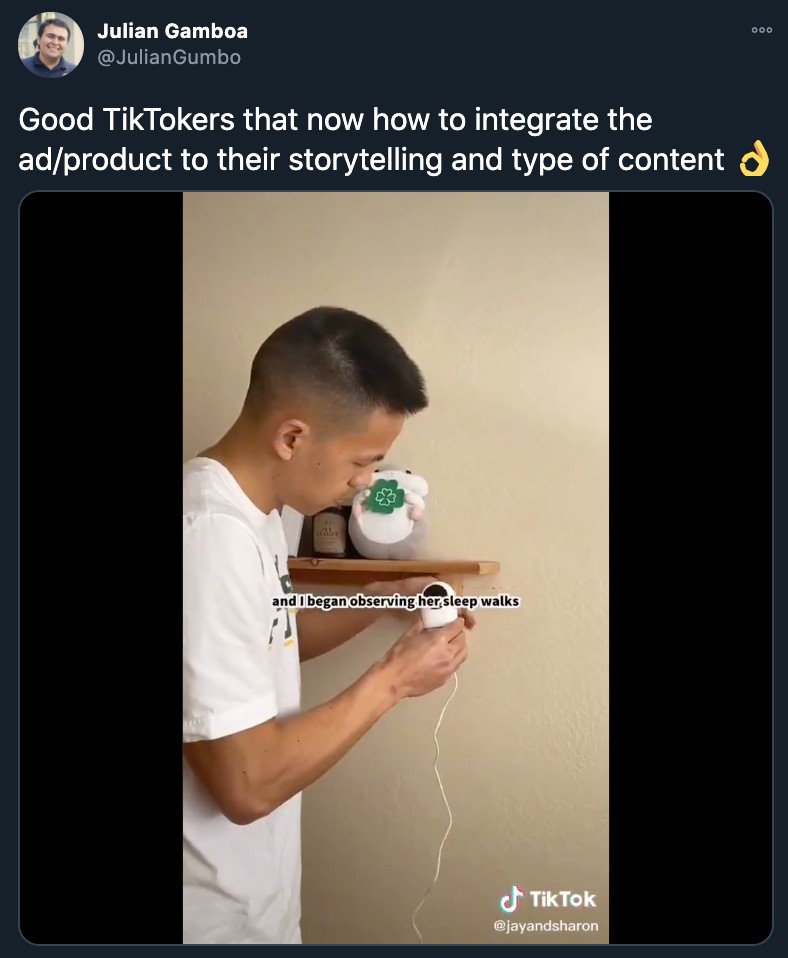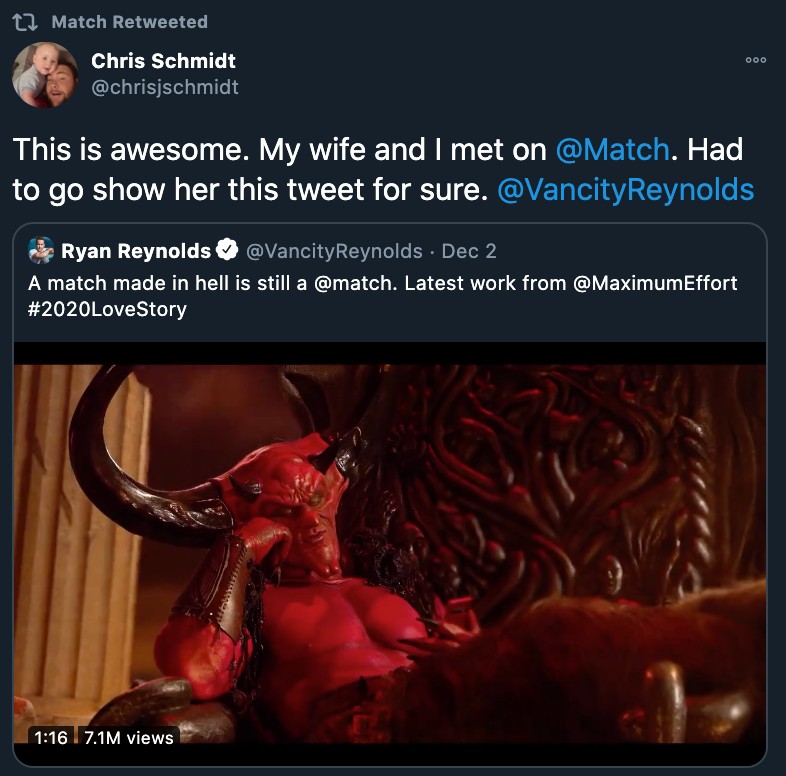This content originally appeared on December 17, 2020 as part of the Future of Marketing weekly email series. Subscribe here.
Welcome to Future of Marketing.
Each week, we send you the most relevant trends, resources, and strategies in social and user-generated content (UGC) by marketing leaders around the globe.
This week, we’re discussing:
- The blurry line between shopping and entertainment
- Storytelling in advertising
- A match made in hell 🔥
Shopatainment 😮
If you’re curious to know where the future of commerce is heading and the important role user-generated content (UGC) plays in marketing – study China and this insightful thread by Connie Chan, general partner at a VC firm in Silicon Valley.
In summary, she shares:
- Shopping and entertainment are merging
- Video is a great way to share unboxing experiences and demos 💡
- Live video will be used for limited time offers and interactive AMAs
- Live shopping is already a $137 billion industry in China (more than U.S. digital ad spend in 2020)
“In China, selling via video commerce has quickly evolved into professional-grade programming,” Chan shared in this article.
“There, selling sessions are scripted and hosted by sellers who are no less qualified than actors on a television show. There’s high-end lighting, rented wardrobes and sets, sound editors, production managers, and professional make-up artists.” 🤯
Creative platforms like Youtube, TikTok, and Instagram, and shopatainment will continue to drive behaviors – where ordinary people hone their craft and their creativity takes the spotlight.
Weave product into storytelling
The best marketing begins with the opportunity to connect and be relevant – and then, social proof and organic engagement emerge from that. It can be as simple as having a one-on-one conversation with a customer or industry leader – to re-sharing content your fans are creating *about* you.
Consider this TikTok, for example – where a user shared a story and comically weaved in a product by AQARA, which he uses to monitor his wife’s inexplicable sleepwalking patterns.
Weaving the product into a story makes this content feel authentic (and less sales-y than a typical ad because it’s coming from a customer and not the brand.
Another thing to note: this is a prime example of UGC and why brands should be using social listening tools to identify when and where they’re being mentioned by fans.
Because as Tom Fishburne, founder of Marketoonist, once said: “the best marketing doesn’t feel like marketing.”
Additional Resources
- The CMOs Guide to using humor in marketing [Forbes]
- 5 Social media strategy questions every CMO needs to answer in 2021 [Hootsuite]
- The 25 best ads of 2020 [AdWeek]
- Social media in eCommerce [FOM]
- 5 lessons learned about content marketing in 2020 [TINT]
Work on building trust with your audience and they’ll be much more willing to spend money on your brand.
#brandcrush: Match 💘
Each week in #brandcrush, we highlight exceptional brands that are channeling their customers’ voice to connect more authentically with their audience.
Match released an advertisement to poke fun at the year 2020 (and it went viral). And while the ad itself isn’t technically made with UGC – it certainly inspired a lot of it.
Actor Ryan Reynolds tweeted the video (which his ad agency produced) to nearly 17 million followers – capturing over 58,000 retweets, more than 255,000 likes, and lots of commentary.
That’s a golden opportunity for Match to study user sentiment, capture brand mentions, and re-share social proof.
Overall, this match made in hell was breath of fresh air from the exhausting tone of uncertainty (and it’s memorable).
Office hours ⏰
Every once in a while, we gather our team of experts to answer your burning questions about UGC. Interested in joining? Let us know.


